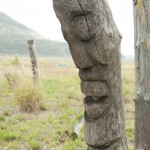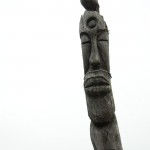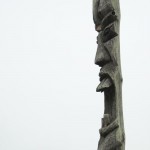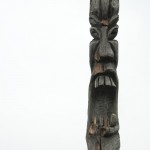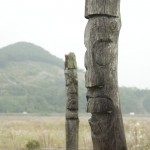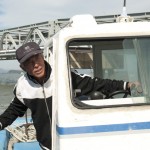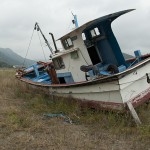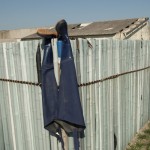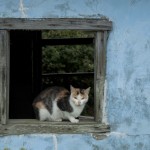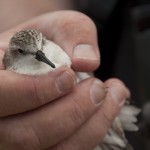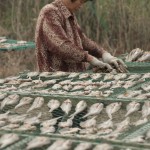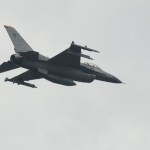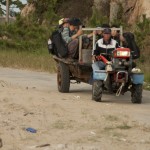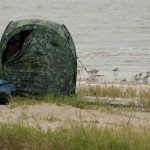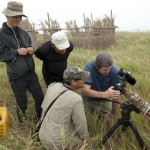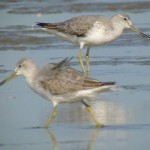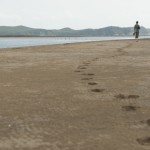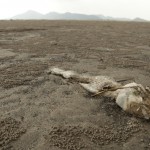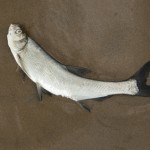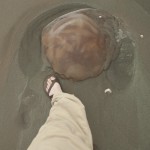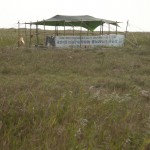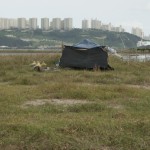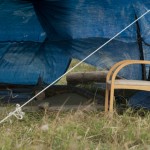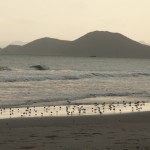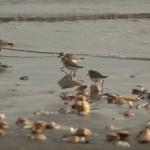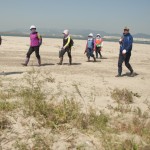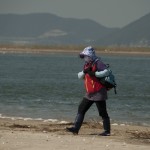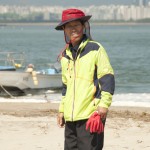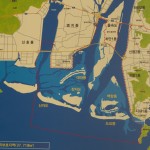Chasing Spoonies in South Korea (#3) – More Time On Yubu
Chasing Spoonies in South Korea (#2) – Yubu Island
Read all posts from this expedition to South Korea

“What’s your favorite bird?”
It’s a frequent question posed to birdwatchers and I stumble for an example that people can relate to in North America: American Dipper, Marbled Murrelet, and Harlequin Duck are all a part of my regular rotation.
But as for international birds, the answer is easy: Spoon-billed Sandpiper. And I was looking at one now.
It was the third afternoon of Cornell’s expedition to the Yellow Sea to find this critically endangered species, and only the first hour at our second location: Yubu Island, on the west coast of South Korea about a hundred miles south of Seoul.
The first two days at Nakdong Estuary in the southeast corner of the country yielded only brief, and distant, views of our valuable quarry. This was the first of two locations our partners at Birds Korea had identified as the best opportunities to find migrating Spoon-billed Sandpipers but, as any birder knows, nothing is guaranteed—especially when the total population barely clears three digits.
After participating in a seminar about Spoon-billed Sandpipers at Chonnam University that morning, we drove for over an hour to an improvised boat dock at 2:30pm. Once there, we were met with troubling news: eighteen photographers were already in place on the beach where we were planning to set up.
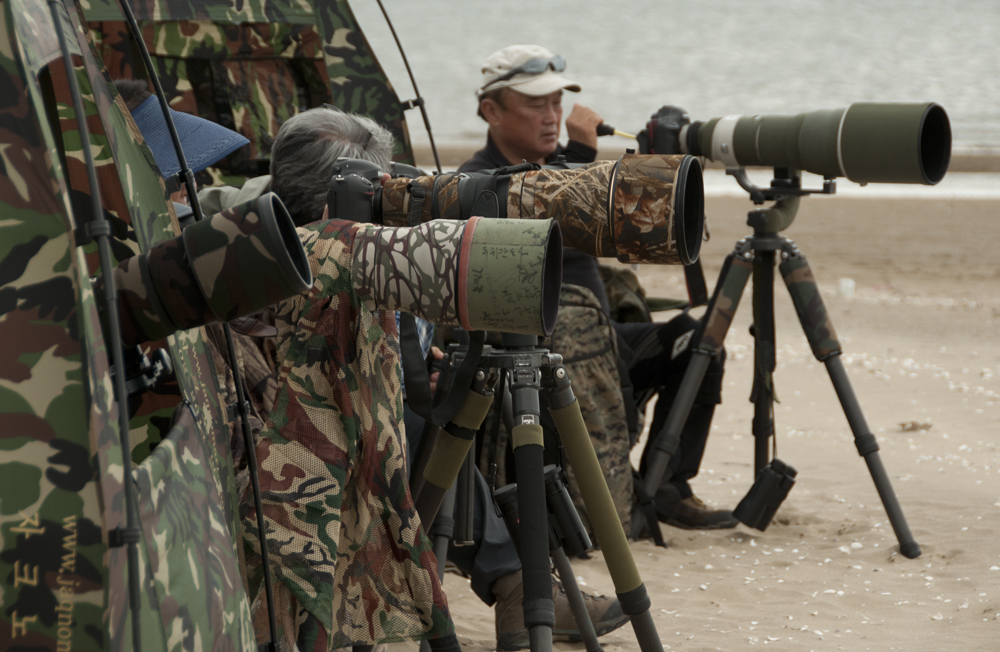
Birdwatching isn’t popular in South Korea, but bird photography is. Birdwatchers and bird photographers have a contentious history around the world, and while both are equally capable of being irresponsible, bird photography is, generally, more likely to cause disturbance because it requires closer proximity to the subject. A 500mm lens magnifies about as effectively as standard-sized ten power binoculars; a 800mm lens—costing north of $12,000—magnifies sixteen times. The spotting scopes of better equipped birders usually start at twenty and can go as high as seventy-five. Greater magnification allows the viewer to be further away from the subject, plus birders can get satisfying views of birds that are less than the “full frame” images many photographers seek. (To be fair, camouflaged blinds, which serious photographers often utilize, are rarely in a birdwatcher’s field kit).
Let me be clear: I love bird photos, and I have good friends who are bird photographers. The advent of digital photography has fueled an explosion of high quality images from talented hobbyists, many of whom generously donate their art to non-profit organizations like Cornell and Audubon. But areas or species highly impacted by photographers create a conundrum for bird conservationists; compelling images and video are imperative to inspiring people to protect birds and the habitats on which they rely. This internal conflict is further inflamed when the species is at risk of going extinct: the parallel needs to address negative impacts to a species and raise awareness for their plight both become more urgent.
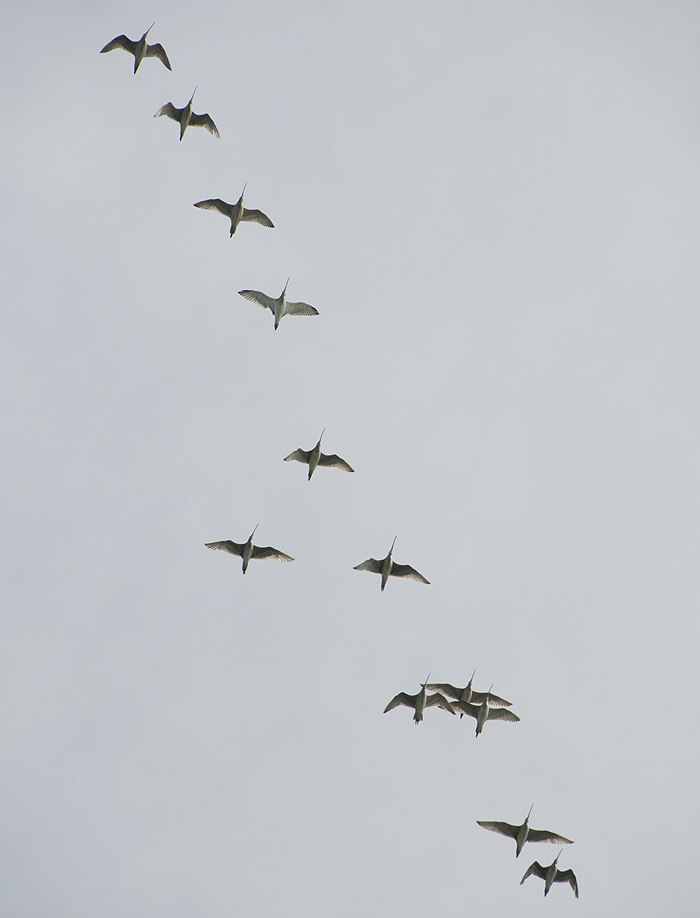
As we departed from the industrial shoreline, several large flocks of curlew—some of the largest shorebirds in the world—flew over our boat. We all silently hoped they hadn’t been startled up from the beach where the Spoon-billed Sandpipers had been reported. They were flying from that direction and surely would have flushed any smaller shorebirds.
As soon as we landed, feeling the pressure of setting up on a narrow beach with a line of other photographers, I grabbed a lens bag, my scope, my personal backpack, and a tripod and walked briskly after Gerrit, trying to keep up with his broad stride in the rising heat and humidity. Within minutes, I could already feel hotspots forming where my feet were rubbing against the sides of my poorly fitted rubber boots.
After fifteen minutes, we received a call on the radio. Dr. Nial Moores, director of Birds Korea, who had opted to wait near the boat dock to scan a flock of roosting shorebirds, had at least three Spoon-billed Sandpipers in his scope.
Approaching sleeping birds is much trickier than setting up a blind and letting the tide push them towards you, but there was no guarantee the rising tide would produce such a rare bird either. We had to go for the sure thing: we walked back.
We slowly approached Dr. Moores. As Gerrit pulled out his camera and sliding dish tripod, Dr. Moores gave us directions to one of the “spoonies.”

“See that black board next to the sleeping Mongolia Plover? It’s the third bird on the left. It’s sleeping.”
Once again, the beach was smothered in plastic detritus from the ocean: disposable water bottles, wrappers, even a laundry basket.
As Gerrit approached in a crouch, then on his hands and knees, then on his stomach, I quietly extended the legs on my tripod next to Dr. Moores and focused my scope on the black board. The heat haze was thick, and my eyesight shaken by a heart palpitating with excitement, but I found the bird.
It was sleeping with its head facing backward and its bill tucked underneath a wing—anticlimactic for species that is named after such a unique attribute.
For the past three days, I had been studying similar birds in similar positions with great anticipation, only to be crushed once the bird woke up to reveal the pedestrian proboscis of an everyday sandpiper, like a Red-necked Stint and Sanderling.

But I could tell this bird was promising: a pale forehead, subtly streaked crown, slimmer build, smaller size, and darker auricular hinted at something different.
Then the flock stirred and the bird awoke. BAM! There it was: the sensuous curves that tens of thousands of birders would (and frequently do) travel around the world to see.
The bill doesn’t necessarily resemble a spoon. From its base, the bill dwindles gradually before flaring dramatically to create a flat spatula more than double the bills width. The bill then tapers to a tip to create an almost lobed appearance, like a gingko leaf, or the smoothly webbed foot of a duck. From the side, the “spoon” almost disappears to a subtle spear-shape.
In the gray plumage of wintering adult—not the comparatively crisp and colorful plumage of a juvenile with freshly molted feathers—this species is truly “a birder’s bird,” as Dr. Moores succinctly stated.

Sure. But damn it’s cool.
We watched intently as the mixed flock of several hundred birds—mostly Kentish Plovers, Red-necked Stints, and Sanderlings—began to grow restless with Gerrit’s approach. I was lucky to find another sleeping Spoon-billed Sandpiper and watched in delight as a third “spoonie” saddled up next to it. The two rested with their bills behind their wings and one eye open, pivoting quickly from side to side like weathervanes in a mercurial breeze.
These two birds had found each other in a large flock, not surprising for such a gregarious family of birds. But, as the world’s population continues to crash, this behavior, as well as our ability to enjoy this spectacle, will become increasingly less likely.
We found four birds in this small flock and reports back from the other beach were of at least three, maybe four, additional birds. The “spoonies” had settled with another large flock at high tide but, unfortunately, the photographers had flushed them as they loudly packed up their gear.
The sun was setting but fortunately we still had three full days on Yubu Island.
